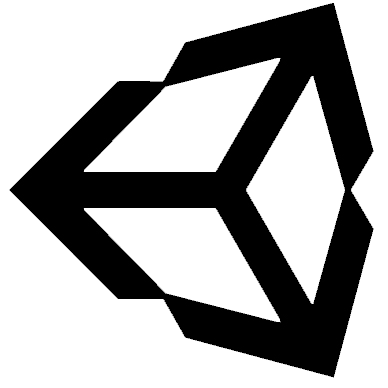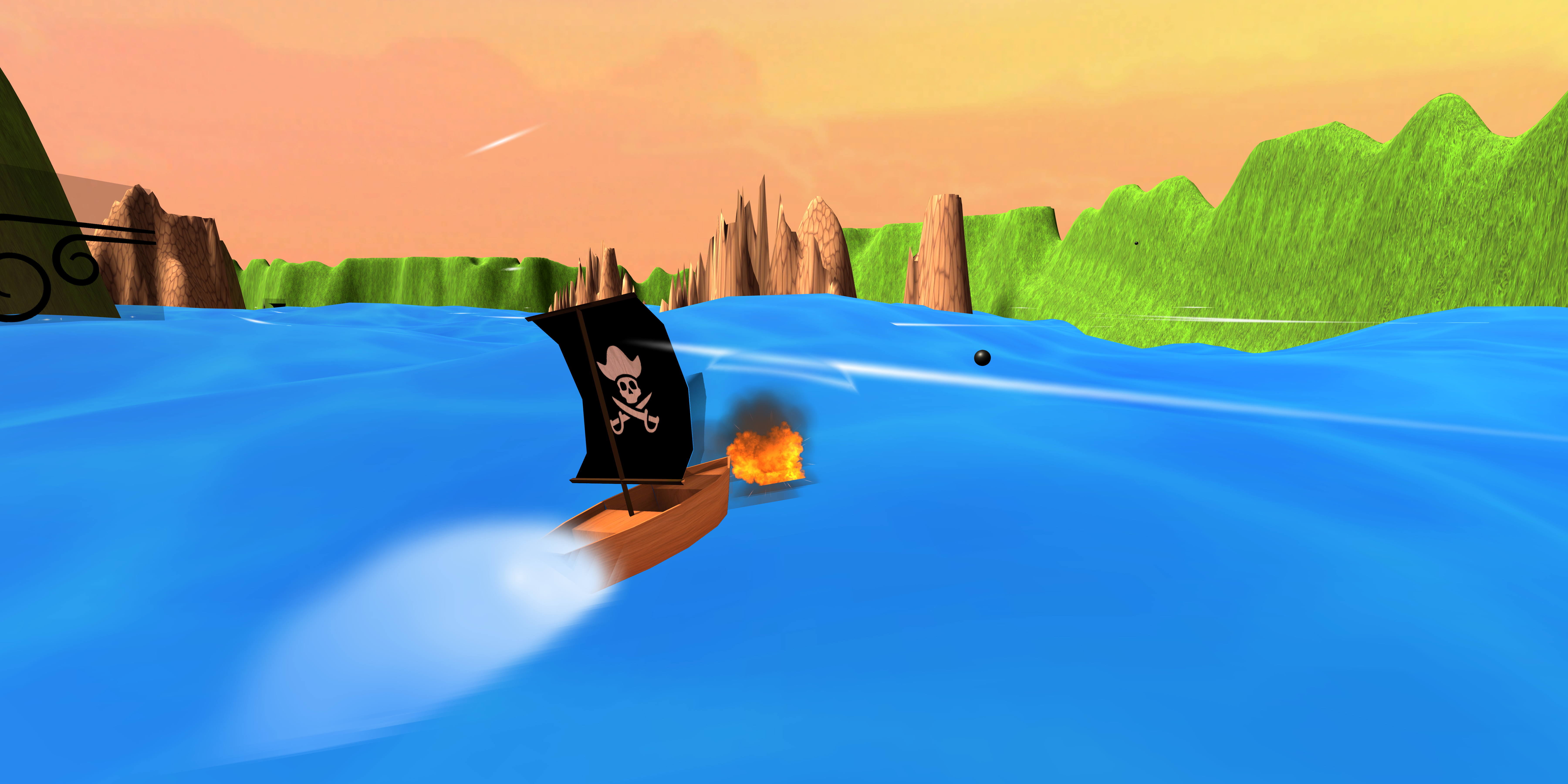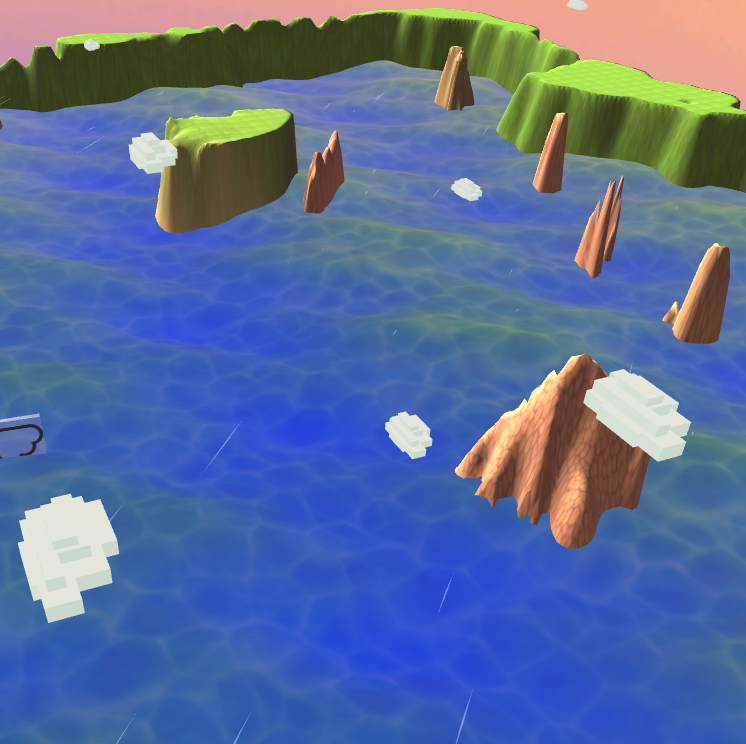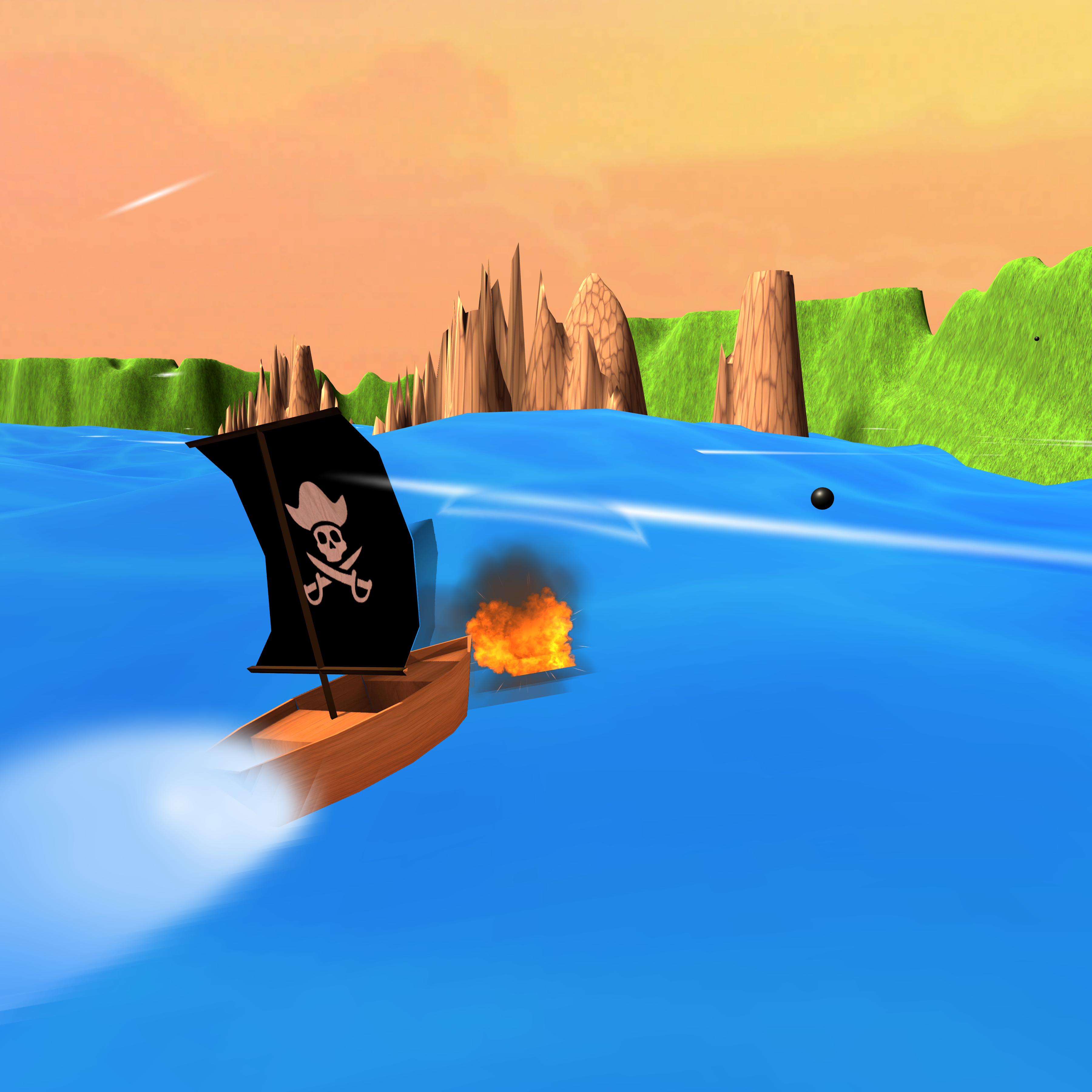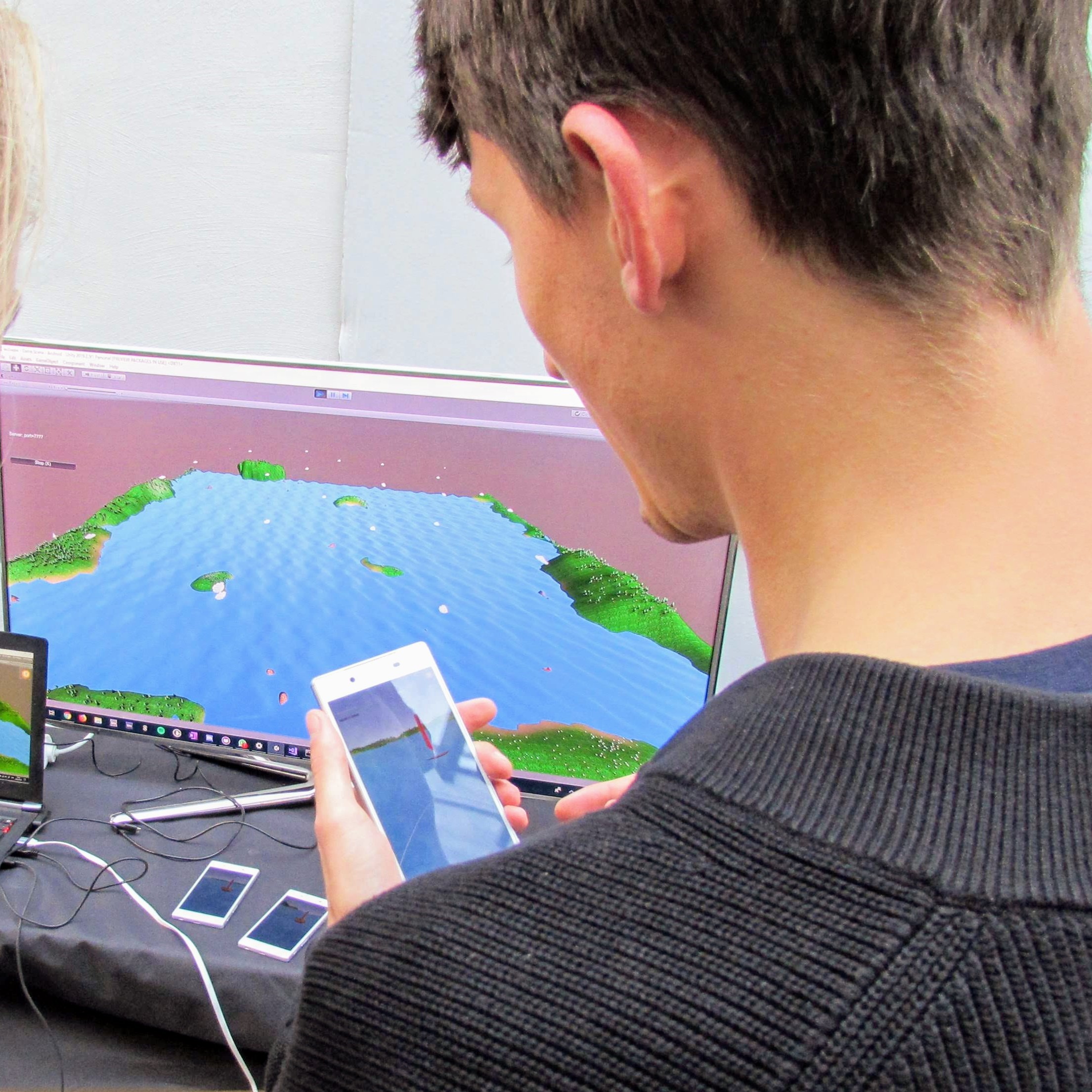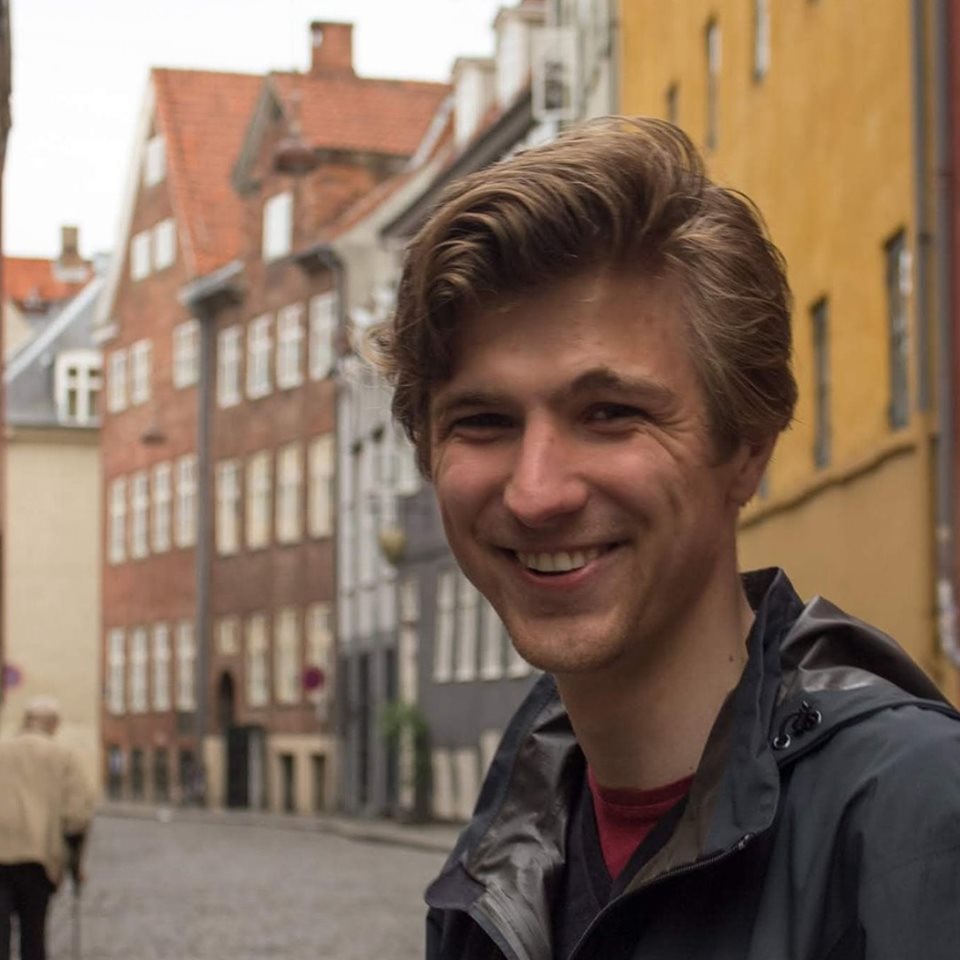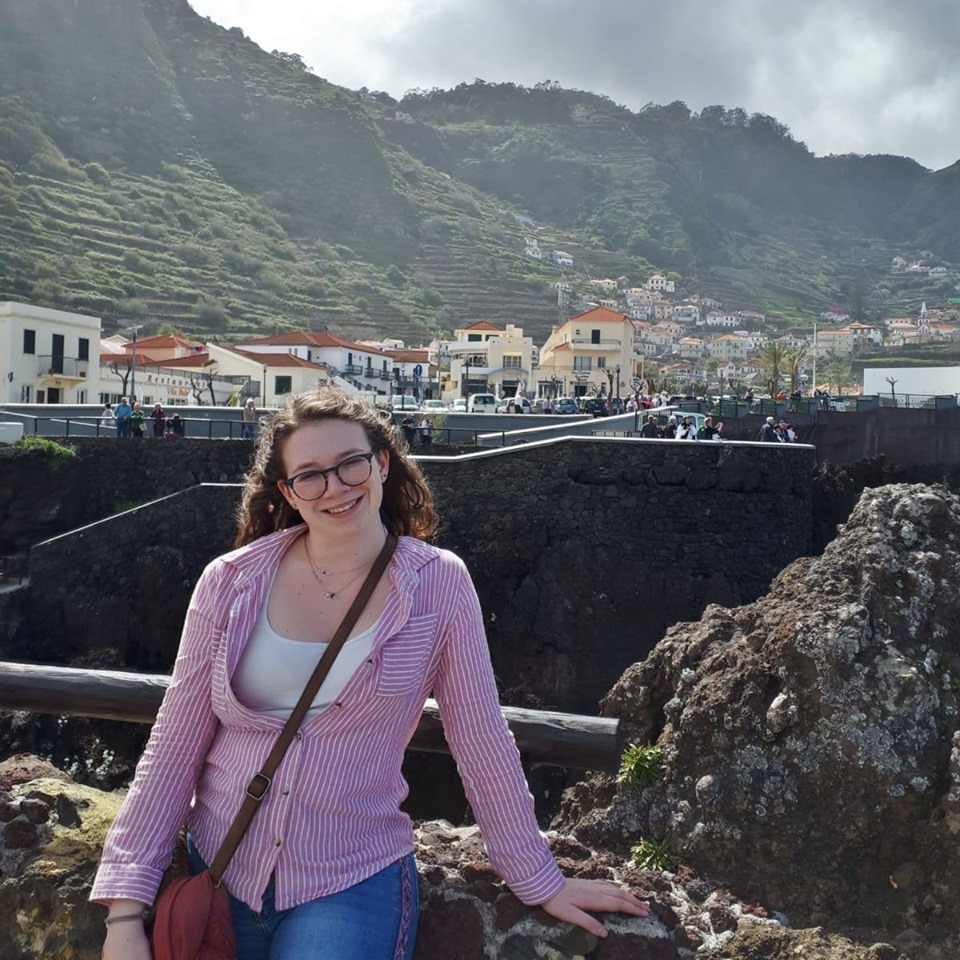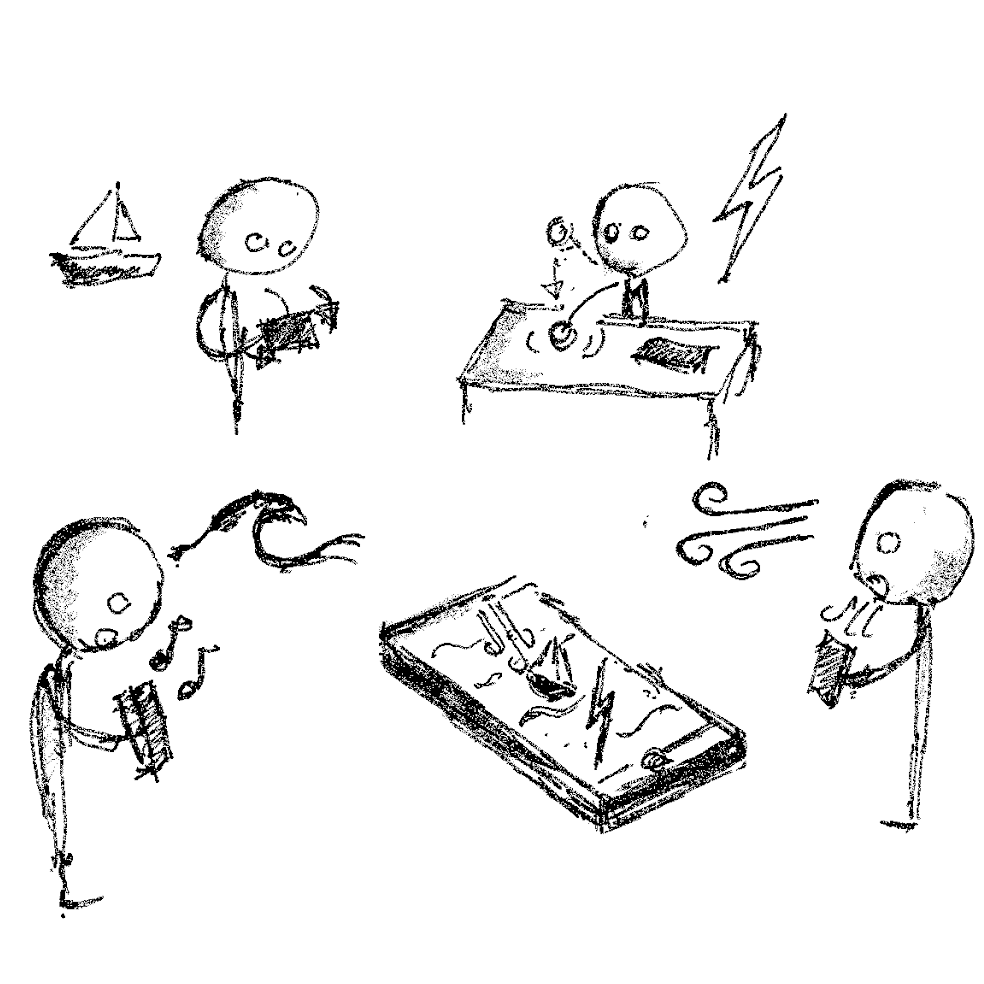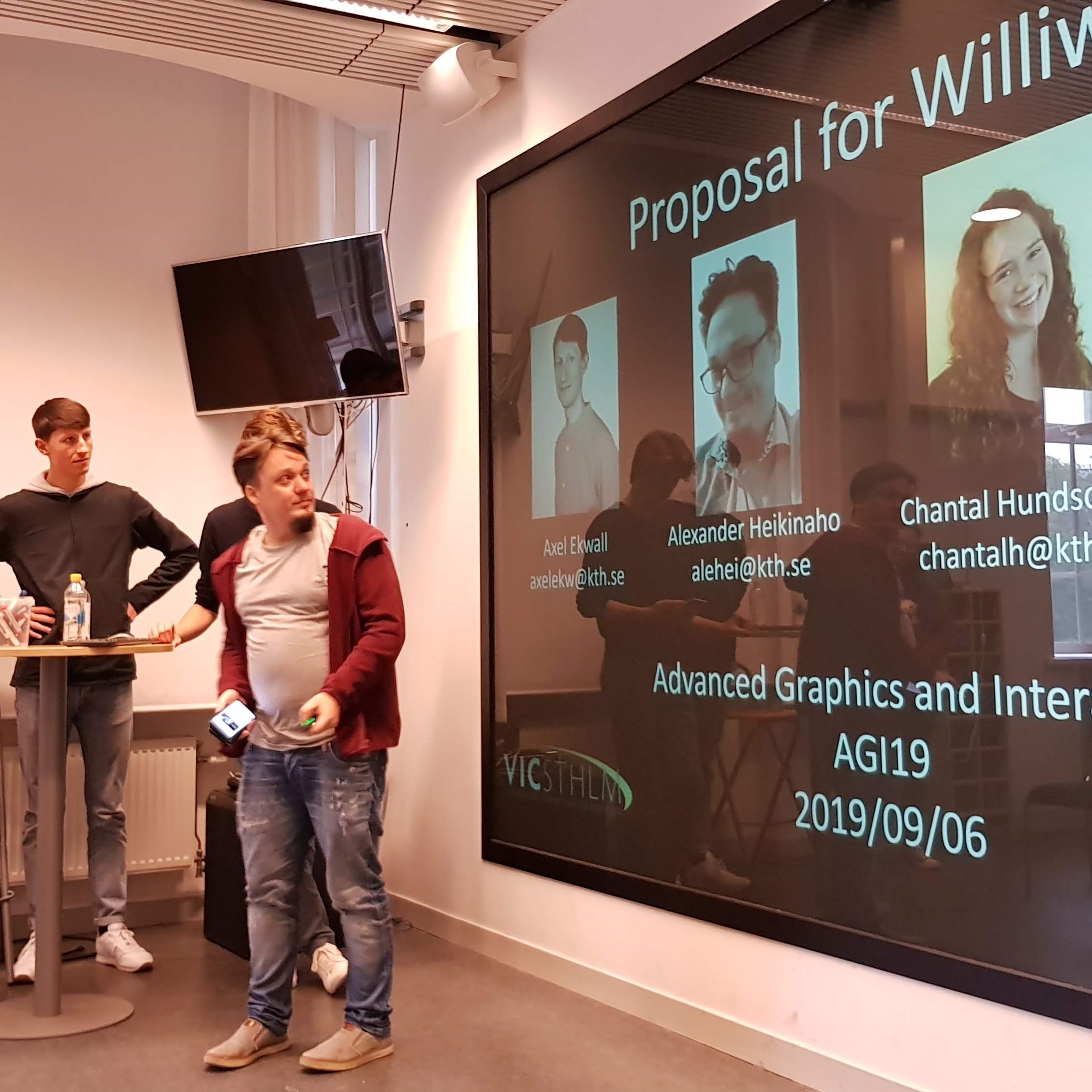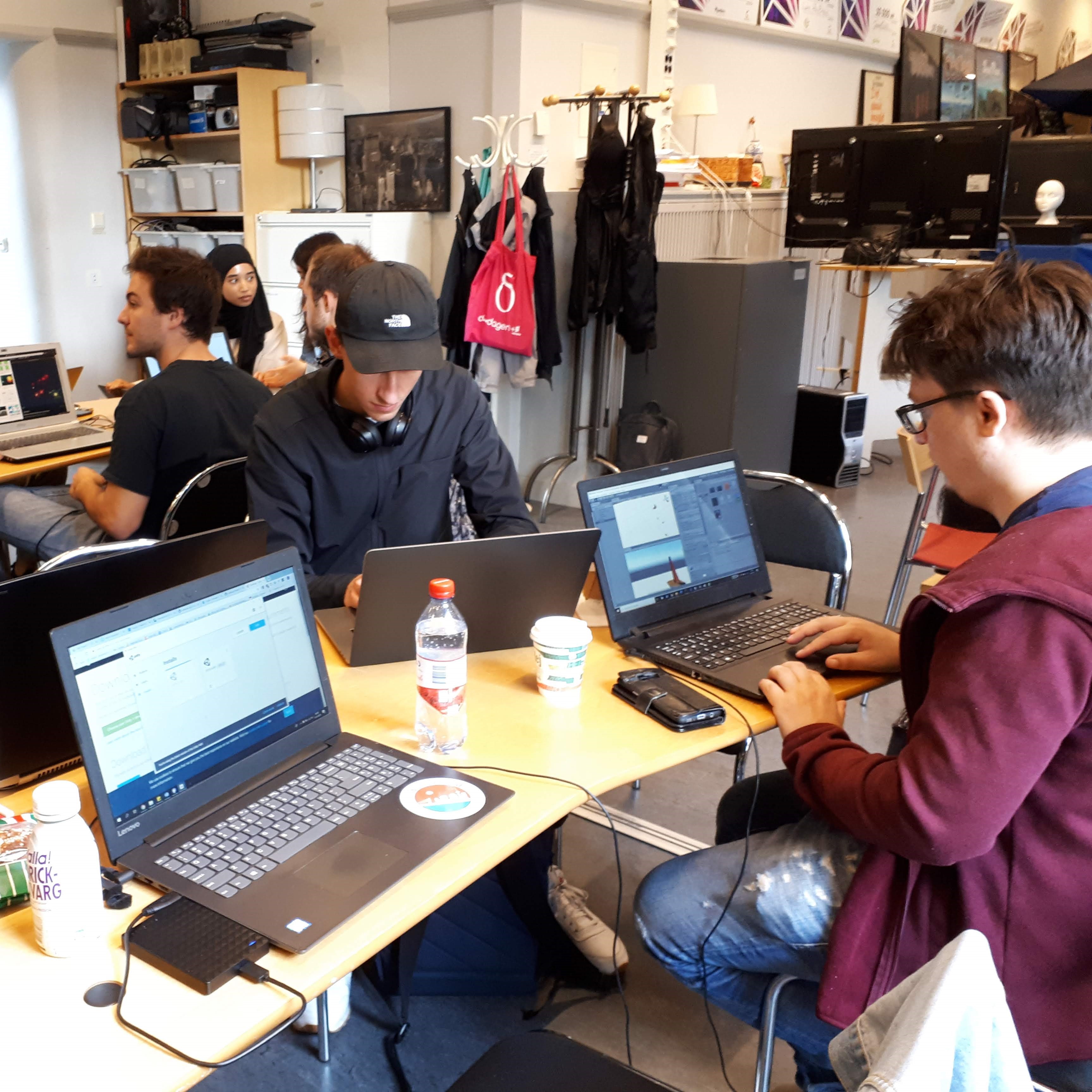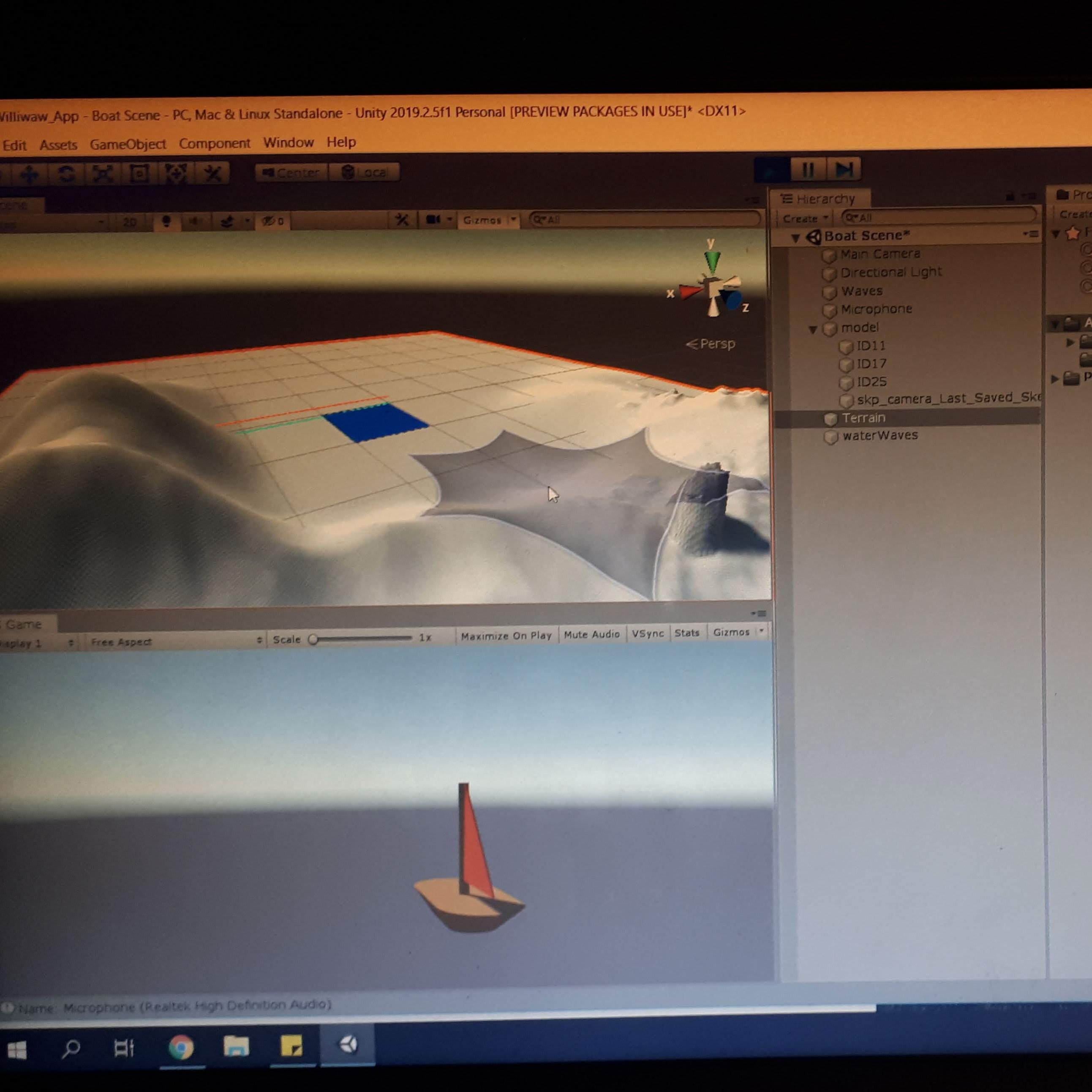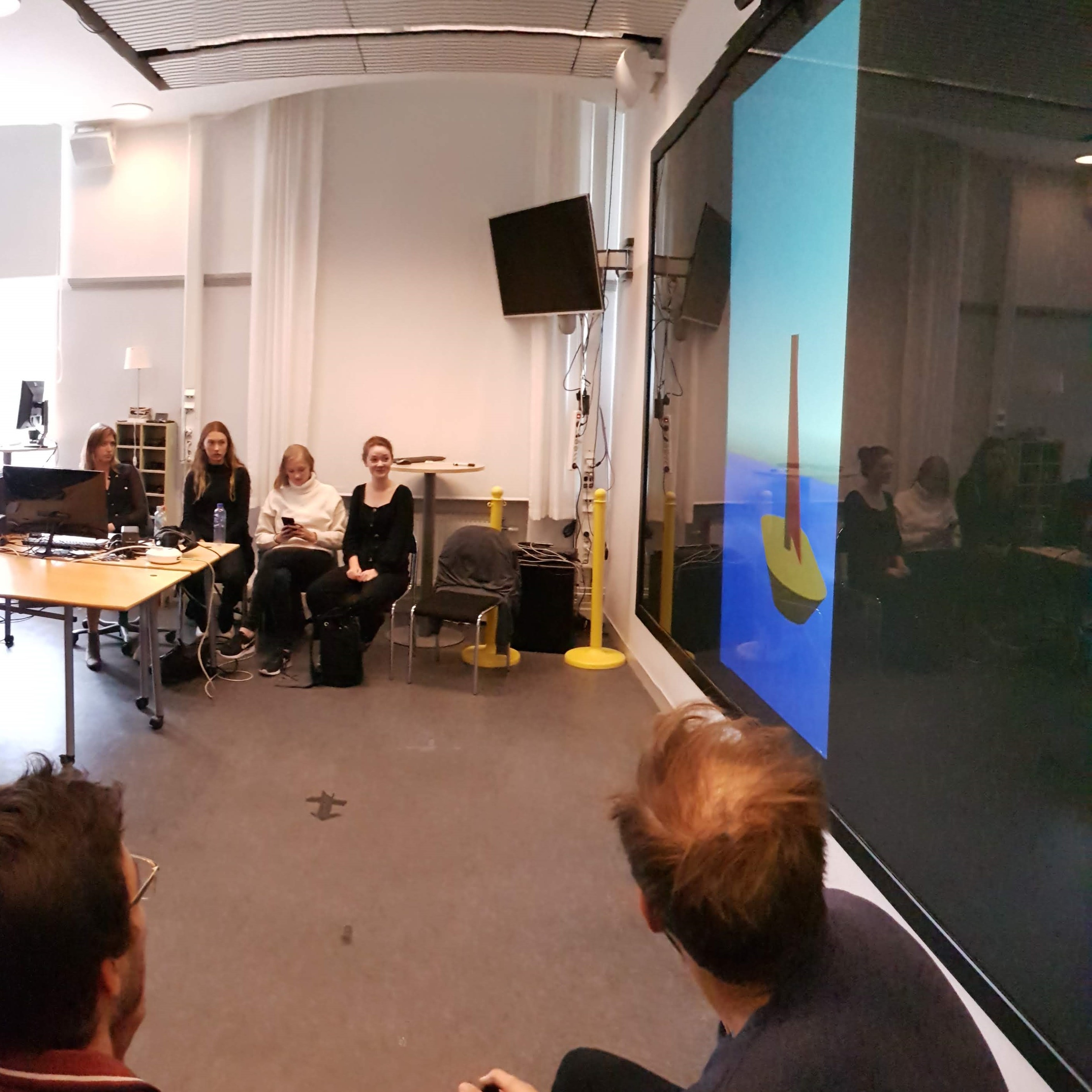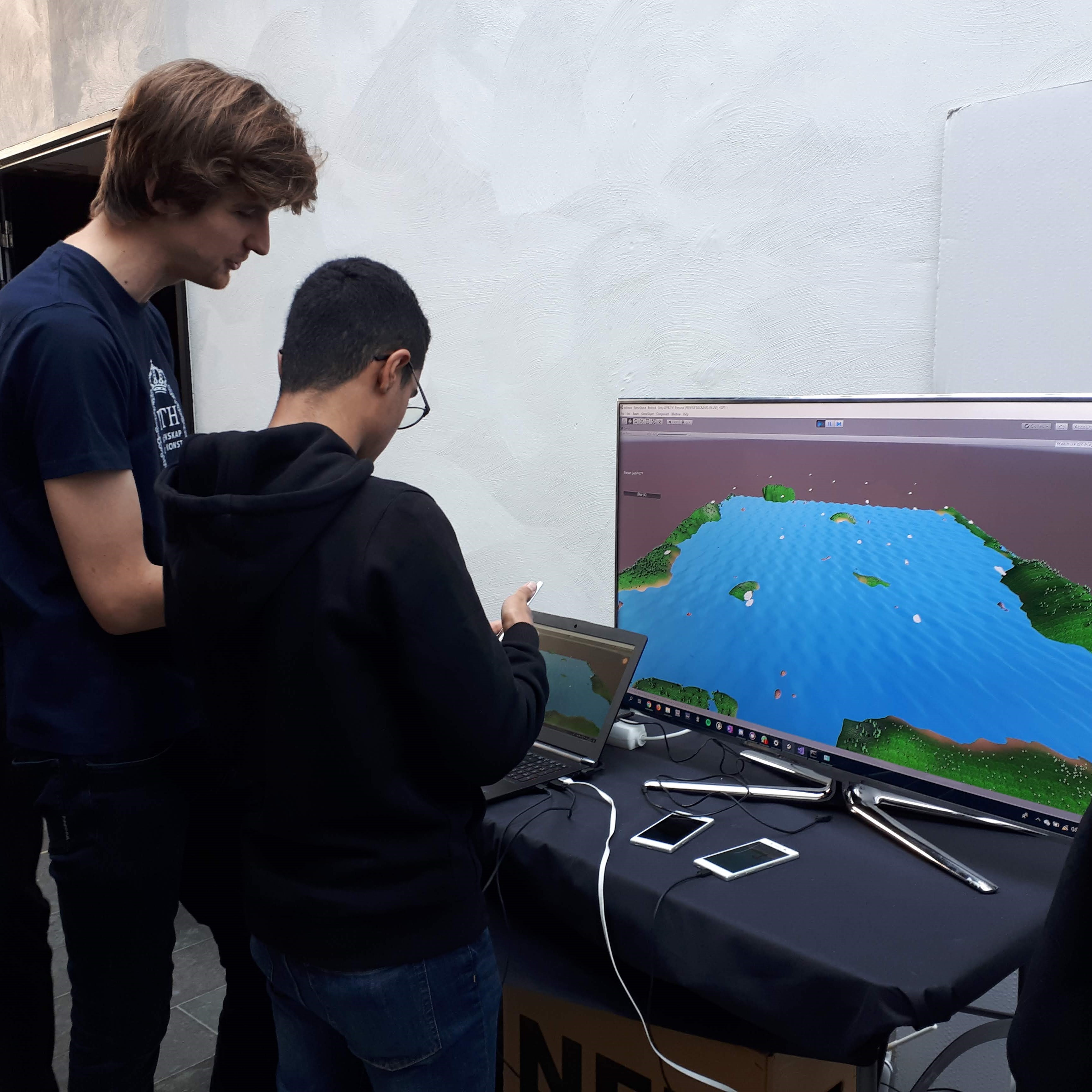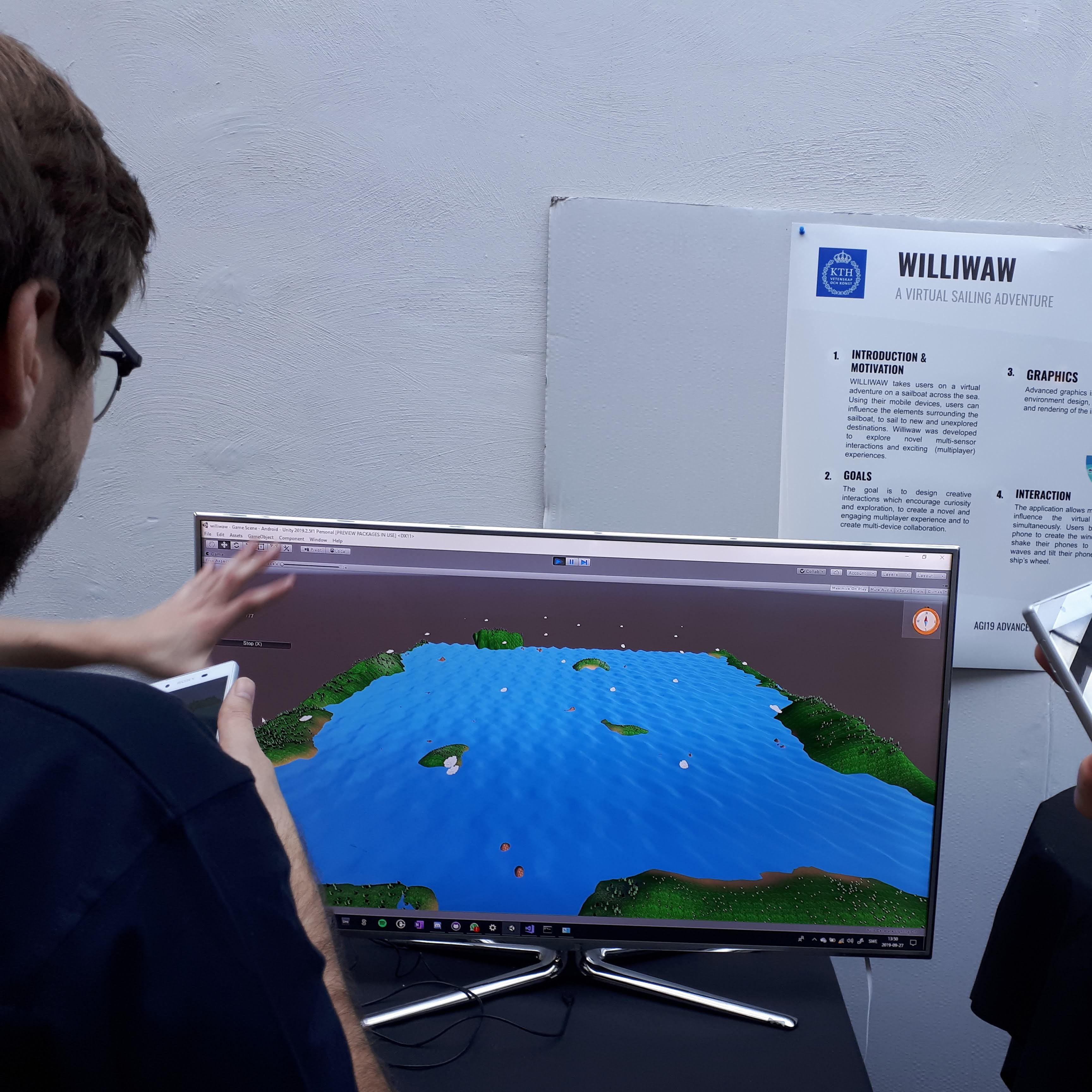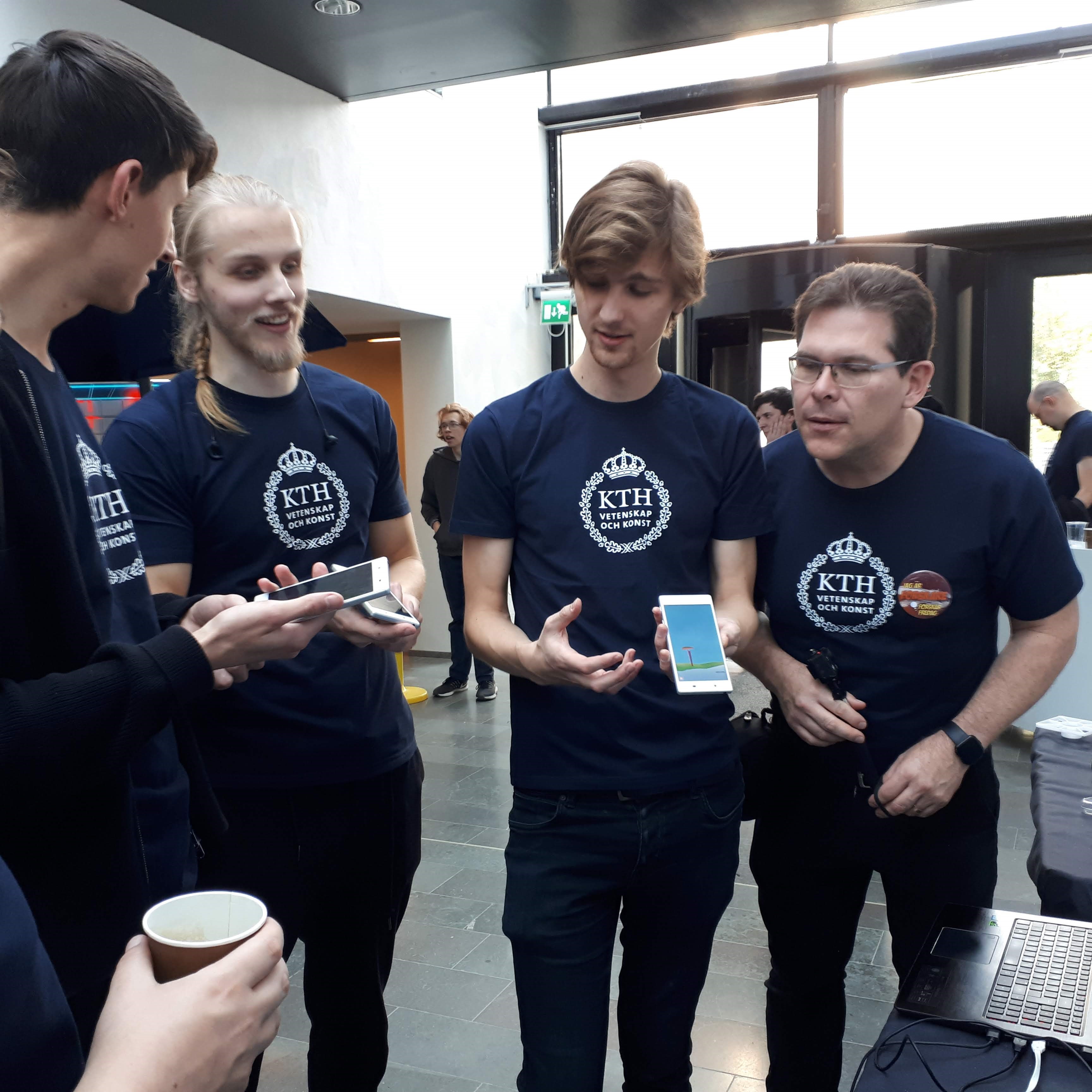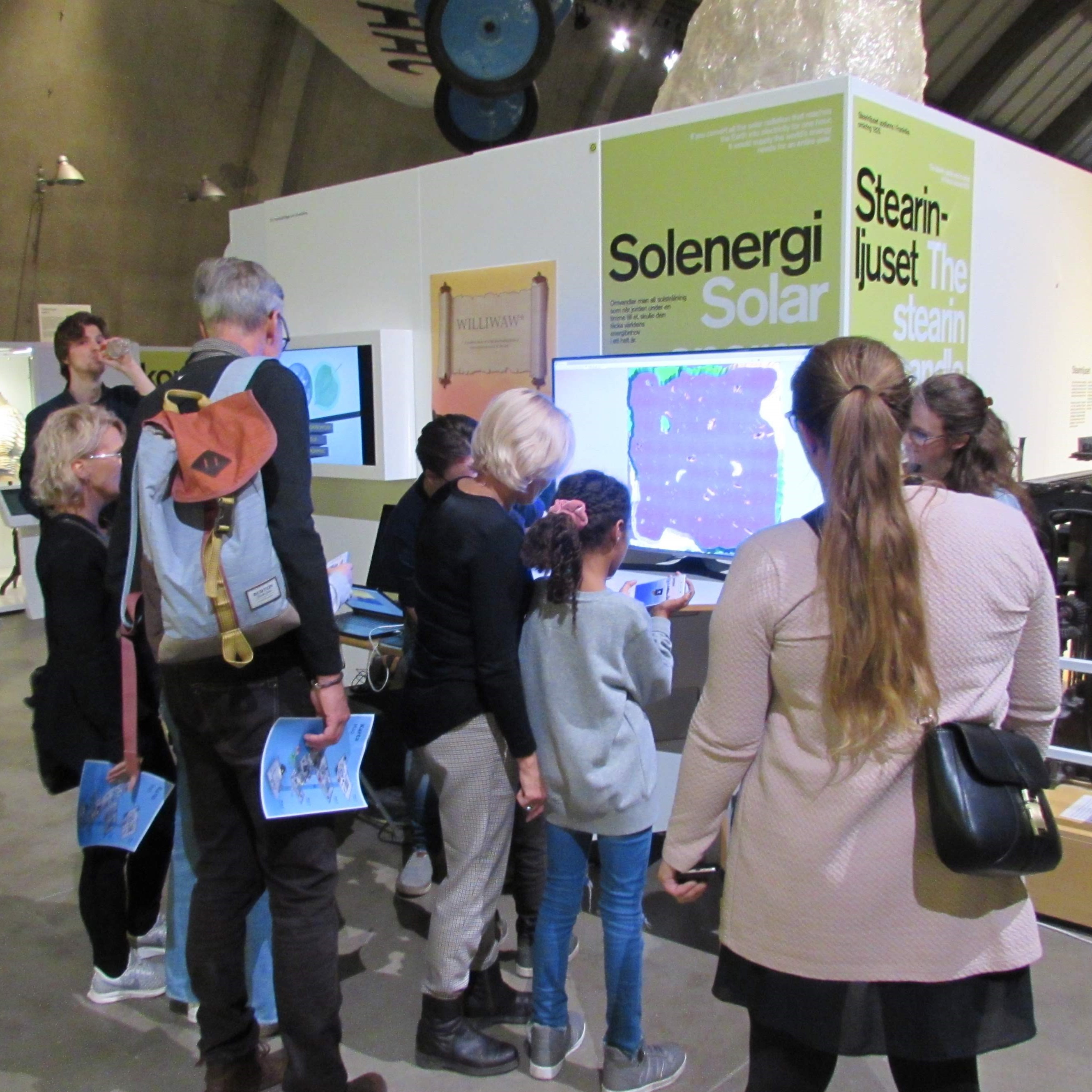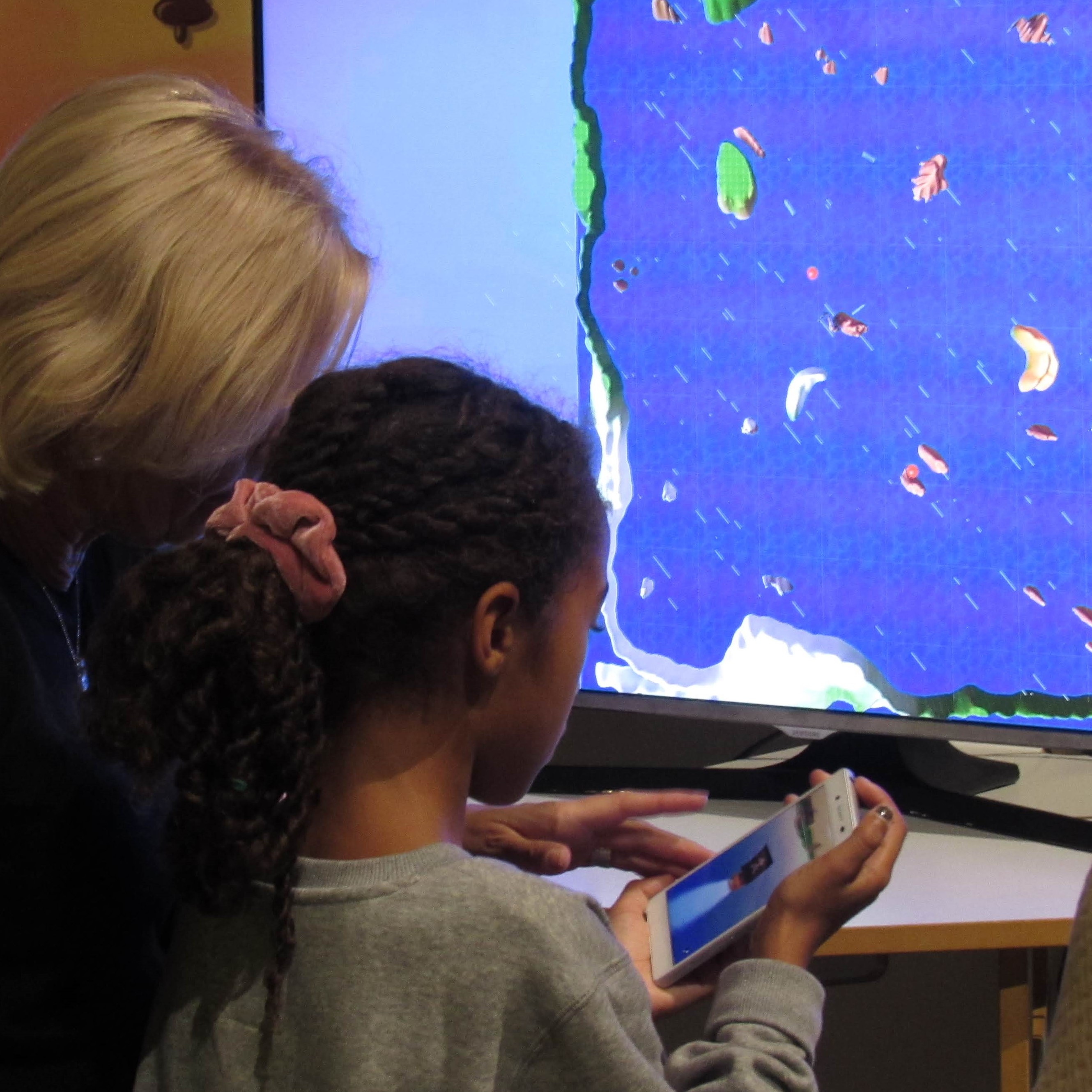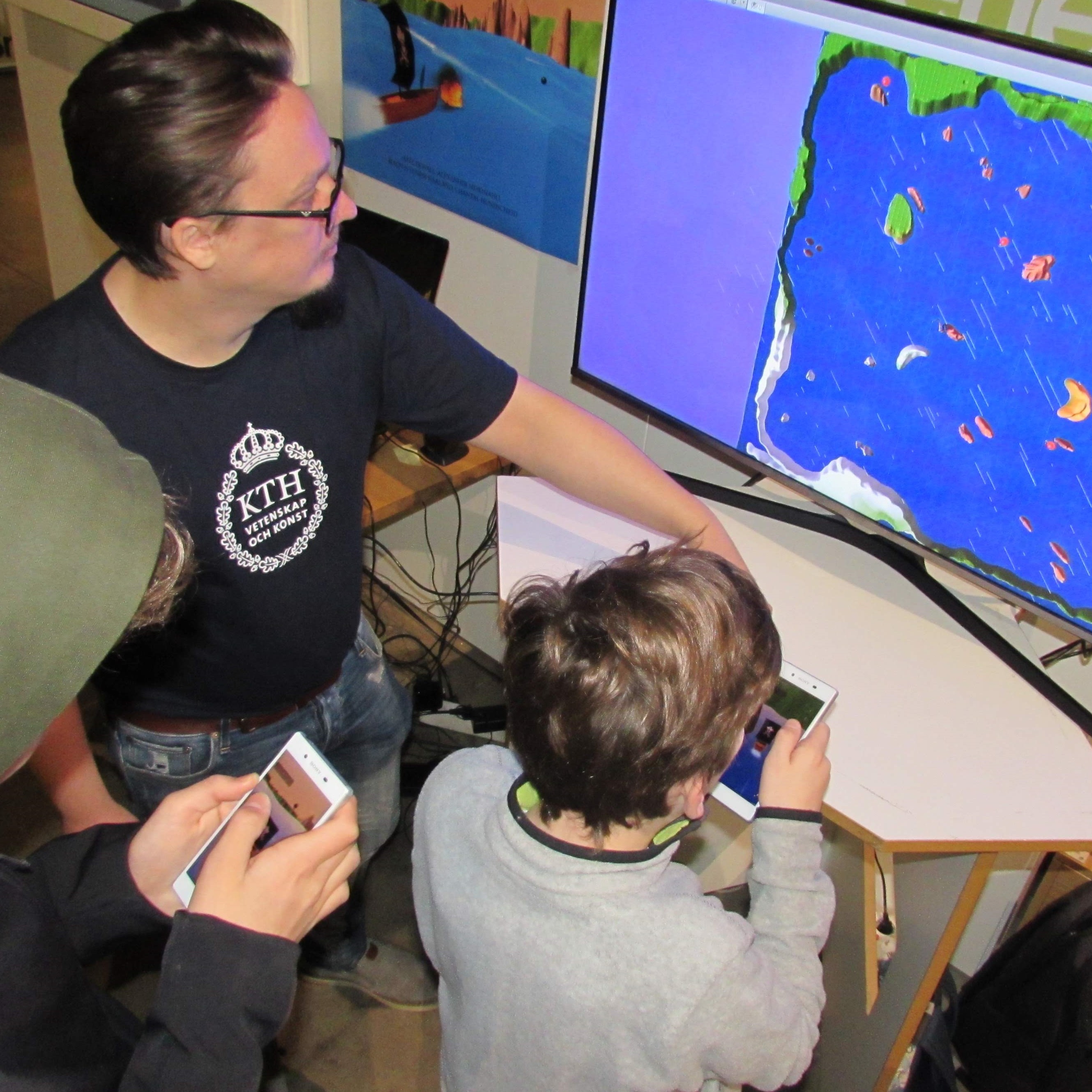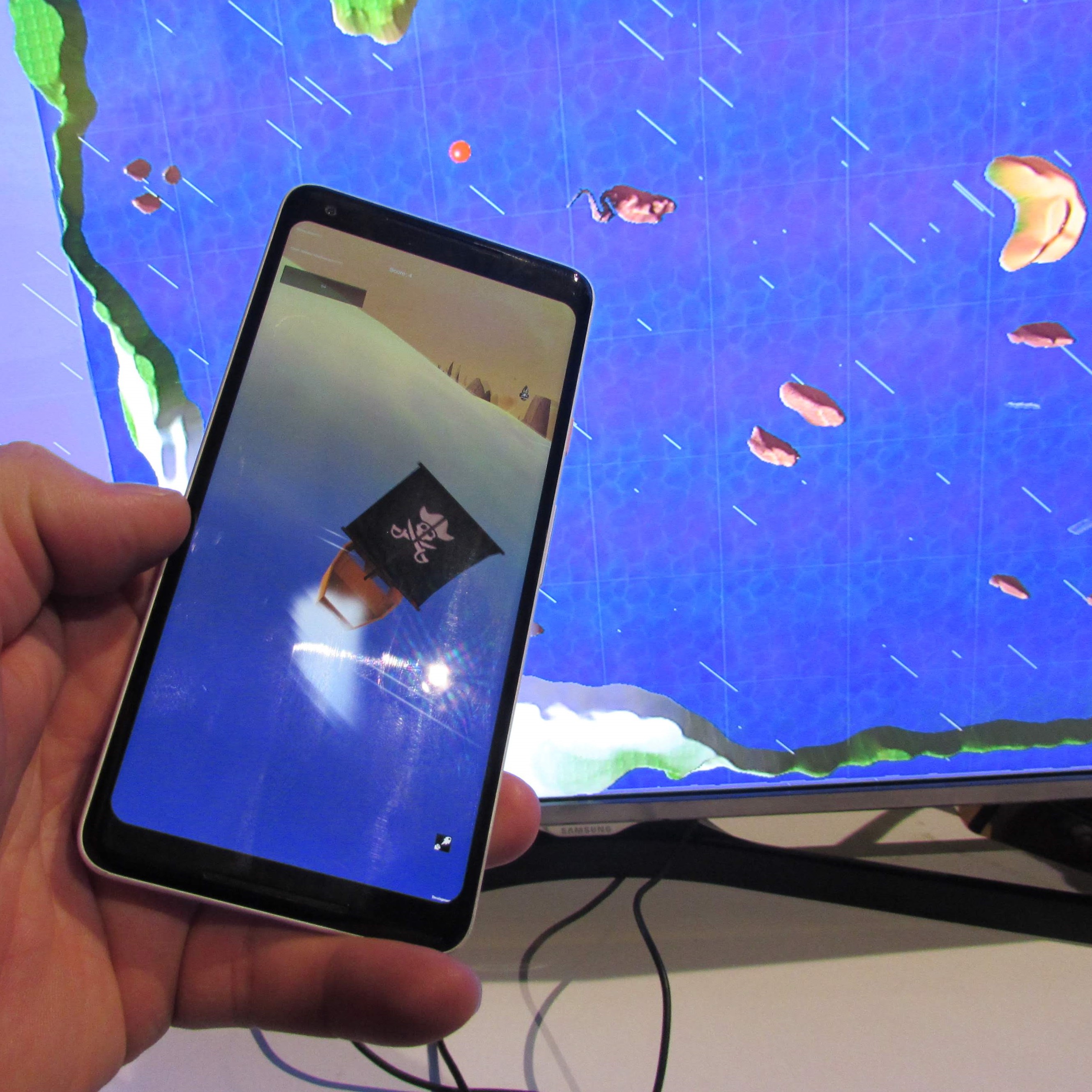The Unity
Asset Store was used to download and import ready-made assets,
such as clouds. Using Unity's Terrain Toolbox, a terrain object was created.
Then, Unity’s built-in Terrain Tools was used to shape the terrain
using a variety of brushes to raise/lower terrain, smooth height and
paint terrain. One end of the environment had snow textures painted on the
islands, and the other end desert textures, in order to simplify
localisation.
Assets were imported to create a custom skybox and to
place clouds in the sky, and a custom script was then created to
have the clouds move across the sky in-game. Lastly, an audio clip
was imported and attached to the boat camera as an audio source, in
order to simulate ambient sounds.
